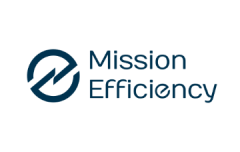Unlocking India’s Demand Flexibility Potential Through Collaborative Action
As India advances on its path toward a clean energy future, Demand Flexibility is rapidly gaining recognition as a key enabler in balancing rising electricity demand and integrating higher shares of renewable energy. Demand flexibility is the ability to shift or adjust electricity use by consumers to reduce pressure on the grid during peak times and to better align consumption with periods when renewable energy is most available.
Amid this transition, collaborative efforts among regulators, distribution companies, think tanks, and implementation partners are proving vital to unlocking Demand Flexibility’s full potential. Sustainable Energy for All (SEforALL) is contributing to this ecosystem by supporting state authorities and distribution companies in four states to help design and implement DF initiatives, aiming to unlock 2–3 GW of flexible demand by 2026.
The recent Demand Flexibility Interactive Forum organized by Alliance for an Energy Efficient Economy (AEEE) and Collaborative Labeling and Appliance Standards Program (CLASP) and several knowledge partners including SEforALL, marked a major milestone, bringing together diverse stakeholders to showcase early progress, identify practical challenges, and reaffirm the need for coordinated strategies to scale Demand Flexibility nationwide. Key themes included regulatory innovation, data-driven planning, and consumer-centric program design.
Building the Regulatory Foundation
The regulatory ecosystem for Demand Flexibility is strengthening. The Maharashtra Electricity Regulatory Commission (MERC), for example, has taken a pioneering step by notifying Demand Flexibility and Demand Side Management Regulations, 2024.
The regulations introduce a Demand Flexibility Portfolio Obligation, requiring distribution licensees to achieve flexibility equivalent to 1.5% of their peak demand in the first year, progressively increasing to 3.5% by the fifth year. To ensure compliance, a performance-based incentive/disincentive framework of INR 2 million per MW is also provided.
With detailed provisions for Cost Effectiveness Assessment tests and Evaluation, Measurement & Verification framework, the MERC regulation provides a strong model for mainstreaming demand flexibility into the state's power sector planning and acting as a blueprint for the other states to follow suit.
Addressing the Full Spectrum of Demand Flexibility Solutions
Demand Flexibility opportunities span across a spectrum of two customer segment types – bulk consumers such as commercial battery energy storage systems (BESS), public water works, electric buses, etc., who have large loads but are few in number; and disaggregated consumers, such as residential air conditioners (ACs), who individually have small loads but collectively offer significant potential when aggregated.
In Delhi, BSES Rajdhani has demonstrated Demand Flexibility's commercial viability through India's first grid-scale commercial BESS. This installation showcases three key value propositions: energy arbitrage (storing cheap off-peak power for use during expensive peak periods), ancillary services for grid stabilization, and capital expenditure deferral by reducing peak demand. Similarly, strong cost-benefit studies will be critical to securing broader regulatory support for Demand Flexibility programs.
Another successful example comes from Tata Power’s Demand Flexibility Pilot at the Bhandup water pumping station with Brihanmumbai Municipal Corporation. Over a 23-day trial, Tata Power successfully shifted 345 kW for three hours daily. Building on this, Tata Power has identified 50 water pumping stations with demand flexibility potential, targeting a 50 MW monthly shift.
On the disaggregated consumer side, residential ACs represent a major opportunity. According to a study by CLASP, peak demand savings from ACs alone could reach 8-10 GW by 2030 in India. With the largest growth in AC adoption still ahead, developing standards for manufacturing IoT-integrated and demand-response-ready ACs is critical. Such efforts are essential to build confidence across the ecosystem — among manufacturers, distribution companies, and consumers — to ensure that automated AC demand response programs are trusted, scalable, and effective.
National Coordination: Building a Platform for Scaling
Recognizing the importance of national coordination, Energy Efficiency Services Limited, Central Electricity Authority, and Bureau of Energy Efficiency have joined forces to build a National Platform for Demand Flexibility, supported by a newly formed steering committee.
This coordinated effort reflects a growing consensus: that scaling demand flexibility requires more than isolated pilots—it demands a national architecture that aligns policy, technology, and market signals. This platform aims to standardize program designs, aggregate demand flexibility opportunities across states, and harmonize regulatory and market mechanisms.
Data as a Key Enabler to Scaling Demand Flexibility Programmes
A major roadblock persists: the lack of accurate, granular data. Without robust data, it is difficult to identify flexibility potential by consumer segment, set realistic Demand Flexibility targets in state-level regulations, and tailor programs to maximize participation and cost-effectiveness.
Bridging this data gap is critical to moving from proof-of-concept pilots to mainstream adoption. It will require investments in data infrastructure, transparent access protocols, and cooperation between distribution companies, regulators, and technology providers.
India now has the building blocks in place—proactive state regulations, successful pilot learnings, and a coordinated national vision. The path forward will require sustained collaboration, targeted capacity building, and data-driven planning to embed Demand Flexibility as a central pillar of India’s clean, affordable, and resilient power system.


